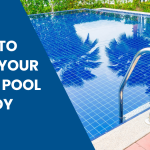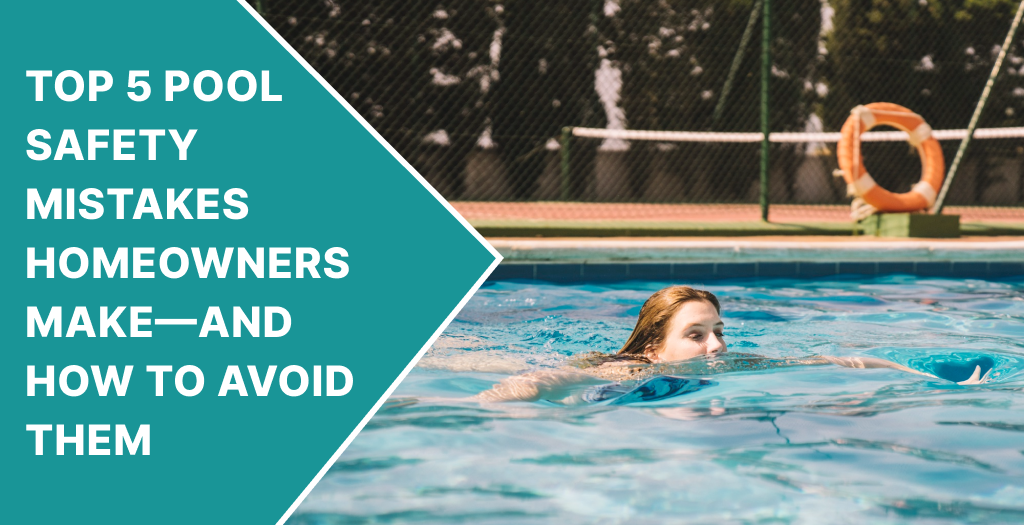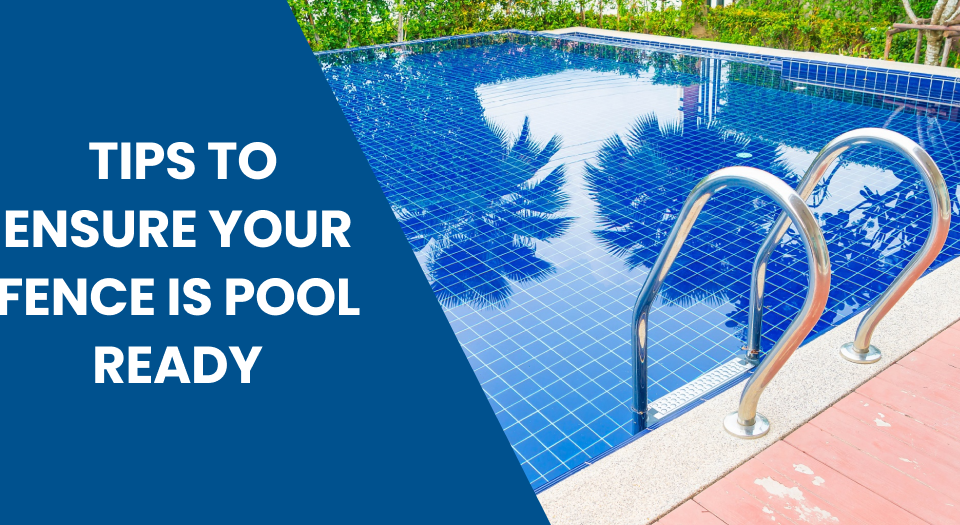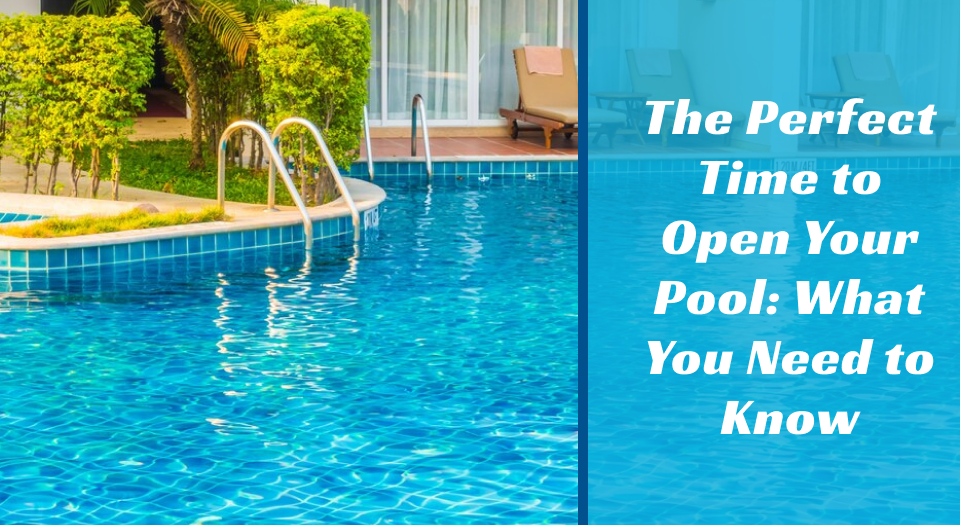
Tips to Ensure Your Fence is Pool Ready
May 14, 2025Owning a pool is one of life’s great joys—especially when summer hits and your backyard becomes a personal oasis. But as refreshing and fun as a pool can be, it also comes with serious responsibilities. Among the most critical? Safety.
Unfortunately, many homeowners unintentionally overlook essential pool safety practices, assuming “it won’t happen to me.” The truth is that drowning is one of the leading causes of accidental death for young children, and most of these tragedies happen in home pools.
While the goal here isn’t to scare you, honesty is essential: one small oversight can have devastating consequences. The good news? With a few key adjustments and some awareness, you can create a pool area that’s fun and safe for your entire family.
Here are the top five pool safety mistakes homeowners make—and, more importantly, how to avoid them.
1. Assuming Adult Supervision is Enough
The Mistake:
Many homeowners believe having an adult nearby is sufficient to keep children safe around the pool. While supervision is crucial, it’s not foolproof.
Let’s be real—distractions happen. A phone rings, someone starts a conversation, or you take just a second to grab a towel. That’s all it takes for a child to slip into the water unnoticed.
The Solution:
Installing a mesh safety fence from a trusted brand like Life Saver Pool Fence creates a dependable barrier that doesn’t rely on memory or attention spans. These fences are designed to prevent young children from accessing the pool without adult assistance, even if your eyes are off them for a moment.
2. Not Installing a Proper Pool Fence
The Mistake:
Some pool owners skip a fence altogether, thinking it’s an unnecessary expense or an eyesore. Others put up a basic fence that technically “surrounds” the pool but doesn’t meet safety standards.
But here’s the truth: a decorative fence that’s easy to climb or one with wide gaps will not protect your kids or pets.
The Solution:
A proper pool fence should be at least 4 feet tall (some local laws require more), non-climbable, and include a self-closing, self-latching gate. The latch should be out of reach of small children, and the fence should completely enclose the pool—no shortcuts.
Mesh pool fences, like the ones provided by Life Saver, are a great solution because they strike the right balance between security, visibility, and aesthetics. They’re tough enough to deter children but transparent enough to keep your yard open and inviting.
And if you’re worried about flexibility, many of these fences are removable, allowing you to take them down temporarily during events—though keeping them up is always the safest choice.
3. Leaving the Gate Propped Open
The Mistake:
We get it—if you’re going in and out of the pool frequently, it can be tempting to prop the gate open with a rock, towel, or even a pool toy. It’s convenient, right?
The problem is that an open gate means your pool area is completely exposed. This common habit defeats the entire purpose of having a pool fence in the first place.
The Solution:
Make it a family rule: the gate stays closed and latched at all times, with no exceptions. Choose a pool fence system with a high-quality, self-closing, self-latching gate that can’t easily be propped or wedged open.
Teaching kids and guests to respect the gate—and reminding them why it’s essential—is part of building a safety culture. A few seconds of inconvenience is well worth avoiding a potential tragedy.
And if your gate doesn’t reliably close on its own, it’s time for a tune-up or a replacement. Life Saver’s professional installation services ensure gates work as designed and don’t wear down easily over time.
4. Overlooking Pool Toys and Climbable Objects
The Mistake:
Leaving toys, chairs, or pool floats near the pool fence might seem harmless, but these objects can serve as makeshift ladders for curious kids.
Children are surprisingly resourceful. That lounge chair pushed up against the fence? It could be a stairway to danger.
The Solution:
Keep the area surrounding your pool fence clear of anything climbable. This includes:
- Patio furniture
- Pool cleaning equipment
- Toys and floats
- Potted plants or storage bins
Creating a “safety zone” of at least three feet around the entire fence perimeter makes it harder for kids to gain access and easier for you to inspect the area.
It’s also wise to store pool toys out of sight when not in use. Kids are naturally drawn to bright, colorful floats—and out of sight often means out of mind.
5. Neglecting Routine Fence Inspections and Maintenance
The Mistake:
Like anything else around your home, your pool fence needs regular care. But too many homeowners assume they can forget it once it’s installed.
Over time, weather, wear and tear, or even kids tugging on the fence can compromise its effectiveness. A latch might loosen, a post wobble, or a section sag.
The Solution:
Do a simple visual inspection every few weeks—especially during swim season. Look for:
- Loose or leaning posts
- Broken or rusted hardware
- Gate alignment issues
- Tears in mesh fencing
If you notice any problems, don’t put off repairs. A small issue today can become a serious hazard tomorrow.
One of the benefits of working with a company like Life Saver Pool Fence is their focus on durability and long-term safety. Their fences are built to last and withstand years of use, but like anything else, they perform best when maintained.
Bonus Tip: Don’t Rely on the Pool Cover Alone
Some homeowners believe that a pool cover is enough to protect against accidents. While covers can add a helpful layer of safety, they’re not a substitute for a fence—especially if it’s a soft or floating cover. Kids (and pets) can still slip under a poorly secured cover or fall on top of one and become trapped. So, if you’re using a pool cover, ensure it’s an additional measure, not your only one.
Conclusion
Owning a pool is a privilege—but with it comes the responsibility to keep your space as safe as possible. Pool safety doesn’t have to be complicated or expensive but requires intention and consistency.
To recap, the most common mistakes include:
- Relying solely on adult supervision
- Not installing a proper pool fence
- Leaving the gate propped open
- Leaving climbable objects near the fence
- Ignoring fence maintenance
Avoiding these pitfalls isn’t just about compliance—it’s about protecting the people you love most. The right safety fence, good habits, and regular check-ins can make your backyard a place of joy instead of risk. It might be time for an evaluation if you’re unsure whether your current setup is safe. Life Saver Pool Fence and its network of certified installers can help assess your needs and recommend a solution that puts safety first—without sacrificing your backyard’s style or functionality. Because when it comes to your family, there’s no such thing as being too safe.




